If you aren’t happy with your iron sight accuracy, or your vision isn’t the best, you may want to consider adding a scope to your airgun.
In all honesty, if you want the utmost accuracy out of your top airgun, a scope is the way to go. Today we are going to explain how to mount a scope to an airgun.
But we can’t just mount any old rifle scope to an airgun – you need one made for an airgun.
Why You Need an Airgun Scope
You’d think “Hey you, a firearm scope is made to deal with a gun’s recoil, it can handle my airgun.”
To that I say, rest in peace, firearm scope.
1. An airgun can disassemble the firearm scope from the inside because of the unique forward and rear recoil impulse most airguns have. Firearm scopes are not rated for this unique recoil impulse, and it can rip them apart.
2. Outside of the recoil impulse, airgun scopes are made to shoot at close ranges, and rifle scopes are not. This is where you run into parallax issues.
Without diving too deep into what parallax is and why it occurs, we can just say it greatly affects accuracy. It places the crosshairs and the image on different optical planes.
This affects accuracy and makes hitting a target difficult. Parallax is adjustable, or set, and is done at a specific distance. So, rifle scopes are commonly parallax free at 50 to 100 yards, which is well beyond the effective range of an airgun.
Airgun scopes are designed to be parallax free at 10 yards or less.
Mounts – Bases and Rings
The mount is commonly used to refer to two pieces of an airgun that work together to mount a scope.
A mount could refer to the scope rings or one-piece scope mount that attaches to the scope, or it could refer to the mount on an airgun where you mount the rings or one-piece base.
Scope rings
When it comes to scope rings you have the choice between a two-piece mount and a one-piece mount.
- Two-piece scope rings tend to be cheaper and more common. They are a great choice for airguns.
2. If you are handling a more powerful airgun a single piece scope mount is likely the better choice. These are more expensive but more stable.
Airgun mount base
Most airguns use an 11mm dovetail base. This base is the industry standard, but some air gun companies like to be special and have their own special mounts. In this case, you’ll need to use specialized rings and mounts.
On more powerful airguns you’ll also see a series of odd holes in the base, these are important to mount stability.
Those holes are designed to function with the scope mount stop pin that’s built into scope rings and bases. The pin mates into the hole in the base and provide a more stable platform for a gun to resist against recoil.
If you have a more powerful airgun and it lacks these scope base holes you’d want to go with a single piece scope mount. They are less affected by recoil impulse and unlikely to move.
Alternatively, you can purchase a Picatinny adapter that converts the dovetail rail into a Picatinny rail. The only downside is the raised effect which can compromise a good cheek weld.
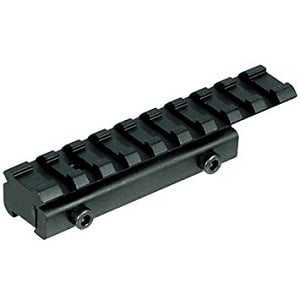
Pic rails tend to have a lot of different choices for scope rings and mounts, and you have a better selection overall.
Mounting the Scope
1. Take the scope rings or mount and remove the top ring entirely.
2. Now fit the mounts on to the airgun’s base, make sure they engage the stop pin if needed. Make sure it’s stable and tighten the fastening screw just enough for it to stay on the rail.
3. Now place the scope into the open rings. Now to want to place the scope rings on, but just barely tighten them. You still want the scope to be able to move back and forth as well as rotate.
4. Get behind the scope and gun and get a good, solid cheek weld. Do not adjust your body to the scope.
5. Now you need to establish a proper eye relief.
Eye relief is the distance from the scopes lens to your eye. Proper eye relief will give you a crystal-clear picture without any ‘scope shadow’ in your sight picture.
So, you may need to move the scope rearwards or forwards, which means unfastening the mounts and sliding them rearward and forward.
You want to have that good cheek weld and position to ensure that the scope is positioned for proper eye relief when you are in a shooting position.
Once you have good eye relief tighten the fastening screws on the base, which secures the rings to the gun.
6. Look through the scope again and ensure the crosshairs are dissecting the scope up and down and left to right. You want the scope to be level and the center crosshair to be perfectly up and down.
7. Once it’s level you can start to tighten the top scope rings. You want to hold the scope and check it as you tighten the top screws. You want to ensure everything is remaining level.
When tightening the screws, you want to tighten each ring in an alternating fashion. So, you’ll do it almost like the same way you change a tire. You’ll tighten the first screw on the right and then tighten the rear left screw.
You are simply going diagonally with each screw, alternating from side to side.
A Special Note for Break Barrels
When it comes to break-barrel guns you are going to have issues with a scope. You may experience barrel droop after the guns been used over and over and find it hard if not impossible to properly zero the scope.
In this case, you’ll need adjustable airgun scope rings. This allows you to raise the rear of the scope for accurate zeroing. Also, it’s hard to zero perfectly because the barrel is rarely in the same position twice.
Zeroing
That’s it! You’re done. Now the only task needed is for you to go out and zero your airgun. This is a simple procedure all you need is a bull’s eye target, a little patience and a stable place to rest your gun. After that, the sky’s the limit.

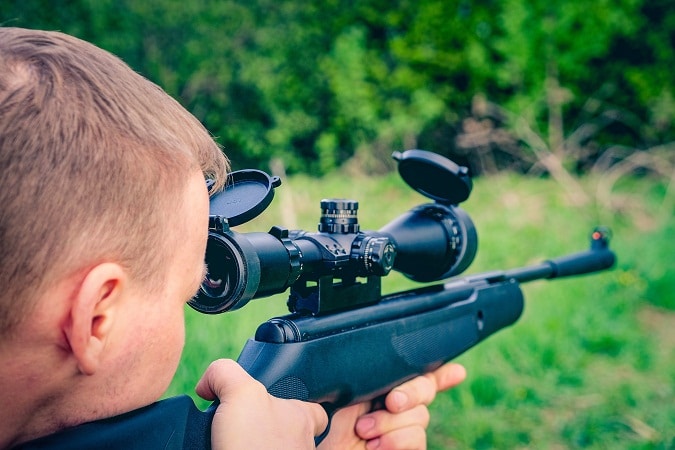
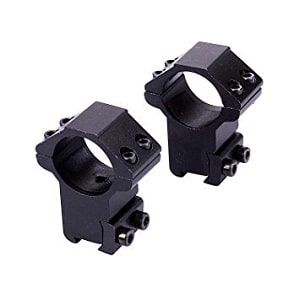

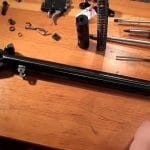
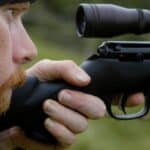
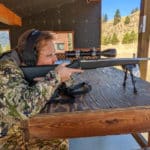
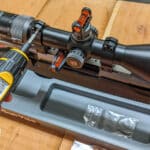
Comments are closed.